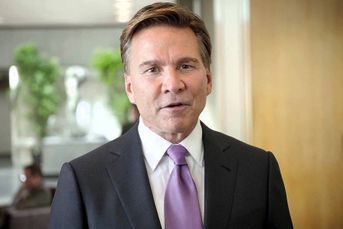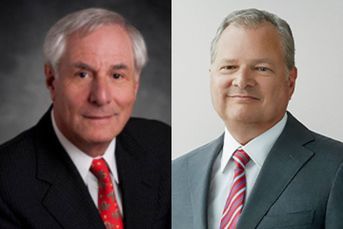Advisers take flight from Morgan Stanley

Twenty-four teams left in third quarter on top of 26 in second quarter. (More: See all the latest moves in InvestmentNews' Advisers on the Move database)
Morgan Stanley continued to see defections of advisers during the third quarter, as the broader brokerage industry grappled with a number of significant regulatory and market changes that spurred advisers to look for new firms to call home.
InvestmentNews tallied 24 Morgan Stanley teams lost for the three months ended in September versus only one team gained. That comes on top of 26 teams that left the wirehouse in the second quarter versus six teams that joined.
Since the beginning of 2014, 196 teams have left Morgan Stanley for other firms, or an average of 17.8 teams per quarter, while 46 teams have joined, or an average of 4.2 teams per quarter, according to InvestmentNews data.
(More: See all the latest moves in InvestmentNews’ Advisers on the Move database)
“I think Morgan Stanley is a great firm. It’s a terrific model built to serve 17,000 advisers with hundreds of thousands of clients,” said Andrew Mies, chief investment officer of 6 Meridian, a 13-person team managing $2.2 billion that defected from Morgan Stanley last month to form an independent registered investment adviser. “But we wanted to have seven advisers and less than a thousand clients.”
Mr. Mies said that changes in Morgan Stanley’s compensation plan to advisers, which puts a greater emphasis on deferred compensation, played a part in the team’s decision to leave the firm.
“The move was many years in the undertaking, and the comp plan was an issue in our thought process,” he said. “It played into our consideration. We left a lot there but we think we will be fine.”
Recruiters gave different reasons for Morgan Stanley advisers leaving the firm.
Like Mr. Mies, one pointed to a 2015 change in Morgan Stanley’s compensation plan that increased the amount of advisers’ pay that would be paid in deferred compensation. Advisers would have to wait several years before seeing that pay, and that shift irked some, said Danny Sarch, an industry recruiter.
CEO James Gorman first discussed the change in comp in 2014 as a way to lower brokers’ payout relative to revenue as the firm focused on raising profit margins over time to its goal of 25%.
“It was essentially a mandatory deferral of income,” said Mr. Sarch. “This angers people. When it hits their paychecks it gets annoying and they consider their options.”
“If you look at a moment in time, there will always be winners and losers” with recruiting advisers, said Mindy Diamond, an industry recruiter. “I don’t read into that as something that is definitively broken at Morgan Stanley.
“Morgan Stanley will tell you that its net head count of advisers is pretty equal to what it’s been other years,” she said. “If you queried 40 advisers who left Morgan Stanley, they would cite various pulls and pushes. Compensation is one, along with leadership, questions about how important wealth management is at the firm, its strong lending capabilities, and others.”
On a conference call with investors in July, Morgan Stanley chief financial officer Jonathan Pruzan, in a response to a question about any impact the Department of Labor fiduciary rule would have on recruiting, downplayed adviser defections.
“You know, I think attrition is clearly running low, and it’s been like that for a while,” Mr. Pruzan said. “So I don’t think we’ve seen any real changes there.”
InvestmentNews has changed the method it uses to track adviser moves and now incorporates data from competitor websites. Many moves are also reported in its database after the quarter is over.
The InvestmentNews “database is incomplete and does not capture inflows of financial advisers who don’t want publicity about their move into Morgan Stanley,” noted Morgan Stanley spokeswoman Christine Jockle, in an email. She did not comment about advisers moving due to the firm’s changes in its compensation plan.
Meanwhile, the Department of Labor fiduciary rule is one of several major factors that are having an impact on the recruiting market, said William Morrissey, a managing director with LPL Financial.
“I do think the DOL will be big catalyst in our business,” Mr. Morrissey said. “Small and mid-sized broker-dealers feel increased pressure to comply with the DOL, which is not as draconian as many thought it would be, but it is an accelerator.”
“We are starting to see more and more interest in how LPL and other firms are working the rule, and every firm we talk to we discuss the DOL,” he said.
Along with the fiduciary rule, which will take effect next year, several other trends are making an impact on the recruiting market right now, Mr. Morrissey said. Those include: the likelihood of having close to zero interest rates for up to a decade; the continued complexity of the regulatory environment for brokerage firms; and the asset management businesses transition from a broker-dealer model to an advice model.
“All of that is putting enormous pressure on the industry,” he said.
Learn more about reprints and licensing for this article.








